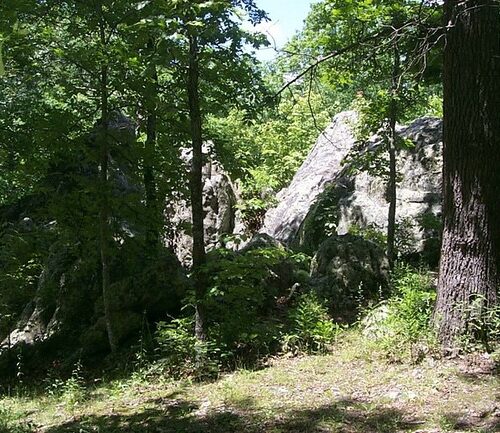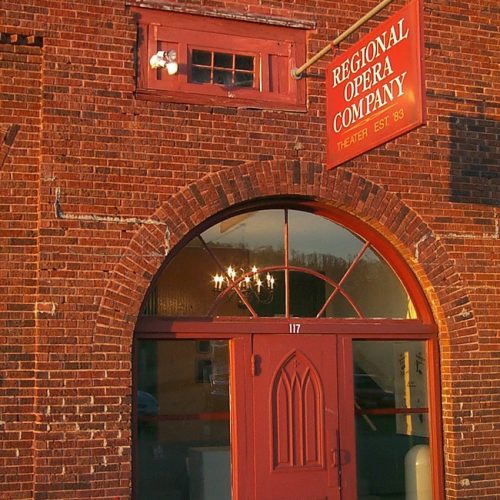Last year a guy from St. James named Dennis Wilson told me that his father, Ira Wilson, could find graves with a divining rod. When I asked Ira Wilson about this, he admitted that even though he was at first skeptical about the practice of divining, or as some folks call it—dowsing, he is now a practicing believer. He even agreed to show me how it’s done and called upon his two dowsing-buddies, Bob Elgin and Norman Brown, to meet us at a cemetery for a, well, divine experience. In short, I learned how to divine.
We met on a sunny morning at the Catholic Cemetery in St. James. I was actually expecting to see the men take peach tree branches from their vehicles, and was very surprised to see that they used metal rods made of bent coat hangers or copper tubing. In fact, Mr. Elgin made a pair of rods for me.
Brown said old-timers often used peach or witch hazel forked branches for dowsing. Elgin said most of the rods were made of metal. Brown had also brought along his hi-tech rods, which he designed by using plastic drapery runners screwed to metal sticks.
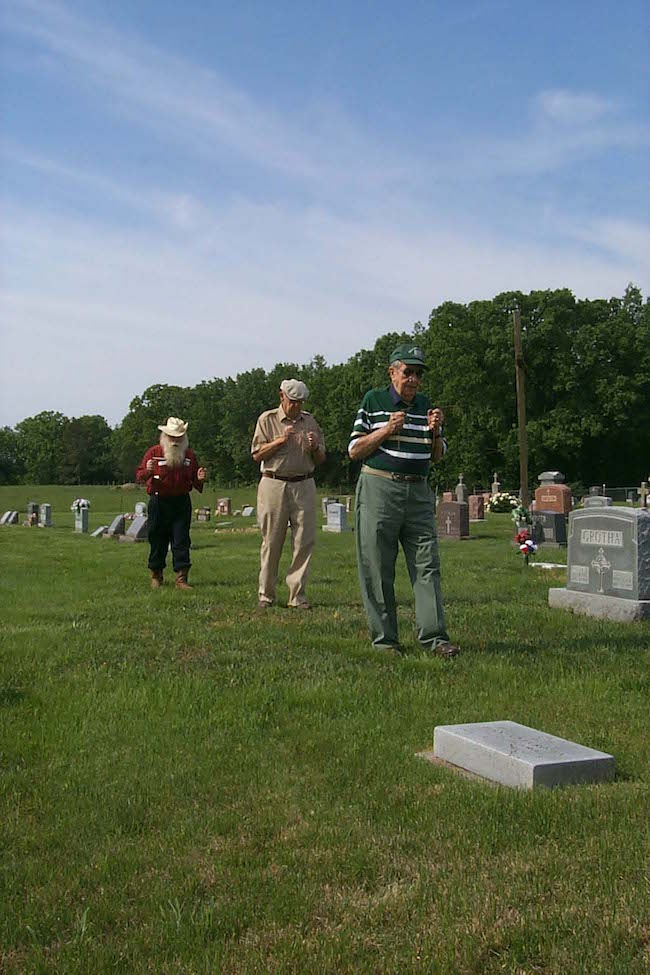
The three men have a camaraderie that is often seen among friends who share years of experiences. They talked about divining and told a few stories of other diviners [those who search for graves] and dowsers [those who search for water]. Brown said he knew one guy whose dowsing rod always moved up or out, as opposed to the standard down and in. Brown reckoned the guy was “wired backwards,” which made everyone chuckle.
Brown also talked a little about the history of divining, or dowsing, and said, “Divining is for those who don’t like to call it witching. The Pope at one time called it witching and forbid it to happen in the church. This thing goes to antiquity past.” He added, “There were still people that did it, though. Some claim it’s a divine gift that allows us to do this.”
Supposedly, the men first dowsed at this site about ten years ago, at the behest of Mr. Wilson’s wife, Margaret. She is in charge of the cemetery and since the burial crew had dug into an unmarked grave and were scared to do anymore digging, she wanted the men to find the other 61 graves that were in the books, but unmarked. Wilson recalled, “I’d never done it before and they showed me what to do, and told me to clear my mind and to do it.” The men found 68 graves.
When the men practiced divining, they walked slowly by the tombstones with the rods at chest-level, pointed straight out from their bodies. When they reached the burial sites, the rods swung inward. Brown even claims he can tell whether a body is male or female. He does this by first “clearing” the rods and making them null. Then, he steps back onto the grave and asks, “Is there a man or a woman under here?” He said, “If it’s a man, the right rod swings in,” which he said proves, “That men are always right.”
I was beginning to wonder if we were ever going to get serious . . .
Elgin then said, “Heck, Norman can tell which one is a Republican and which one is a Democrat!”
I knew then that this was going to take a while . . .
Thankfully, Butch Davis, of St. James, showed up at the cemetery and brought us back to order. He had been at the Main Street Café [now Jo’s Diner] earlier when Wilson and Brown were eating breakfast there. He decided to come on out and see what divining is all about.
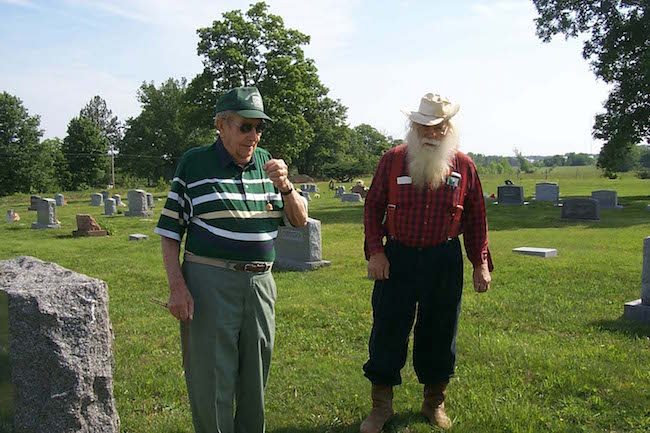
He said plenty of other folks back at the café said they would like to see what we were up to, but he was the only one “nosy enough” to come out. Davis asked Elgin if there is a thought process involved in divining, and Elgin said, “You have to concentrate on what you’re doing. If you’re looking for a burial, you have to think about that. Look in the graves. See them down there.” Elgin, a retired county surveyor, says when he dowses for water lines or sewer lines, he thinks of water and the imagery of the lines below the ground.
Then it was time for my lesson . . .
Mr. Brown stood directly in front of me and told me to look at the ends of the rods and then to think “No, no, no,” and when I thought those negative thoughts, the rods swung in toward my chest. Then, he told me to think, “Yes, yes, yes,” and when I did, the rods swung straight out again. I was ready to try divining.
I walked past the tombstones and concentrated on seeing six-feet underground. I saw caskets and Sunday clothes and skeletons and cobwebs. The rods gently rotated inward when I reached the first grave, and when I stepped past the grave they started to slowly return to their normal position. I was not moving those rods with my hands. “See, you can do it,” said Elgin.
I then followed the men to the unmarked graves and had success with divining over there. Sometimes if I looked down, I could see that I was standing on a sunken spot—but I had not realized the ground sloped down until the rods moved in.
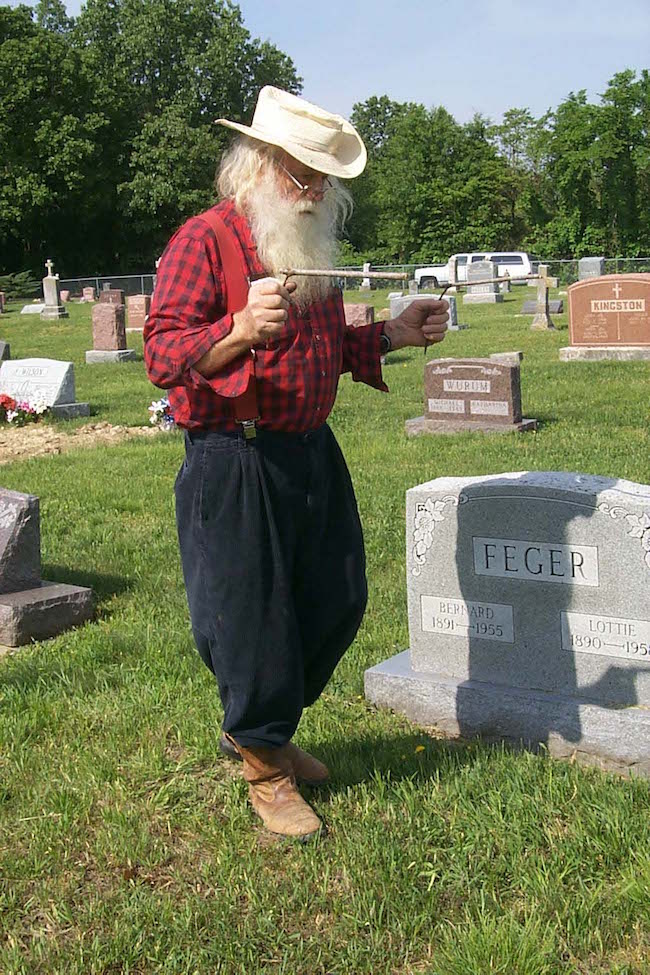
Brown said, “If there’s a negative force-field, you cannot do it. You gotta believe in it, and you can’t have people around you who are negative to this.” When asked about how dowsing works, Elgin said, “I have no idea. It’s not magnetic at all. There are no magnetic materials involved. It just works for some people and for some people it doesn’t.”
I’m glad it worked for me and I’m really glad there are folks like Ira Wilson, Norman Brown and Bob Elgin who don’t mind putting up with the likes of a curious columnist. I’m going to add my new dowsing rods to my stash in the back of my truck, along with the boots, a towrope and other accoutrements for sleuthing around the Ozarks.
This Ozarkian was first published in 2003. Sadly, I know that 2 out of the 3 gentlemen are in a “divine” place. I miss them. I miss having coffee with them at the “diner,” and hearing their stories. ~Barbara Baird


